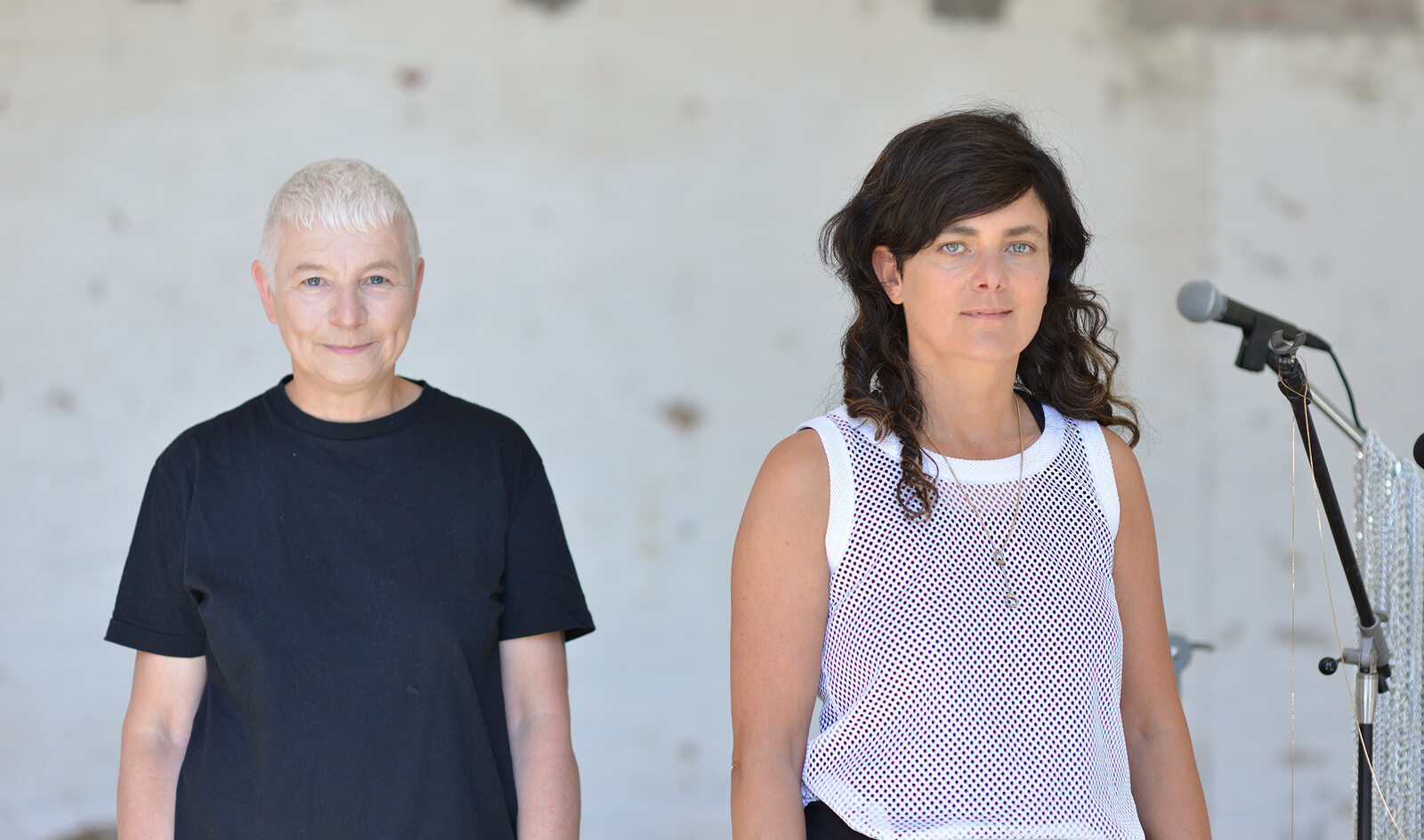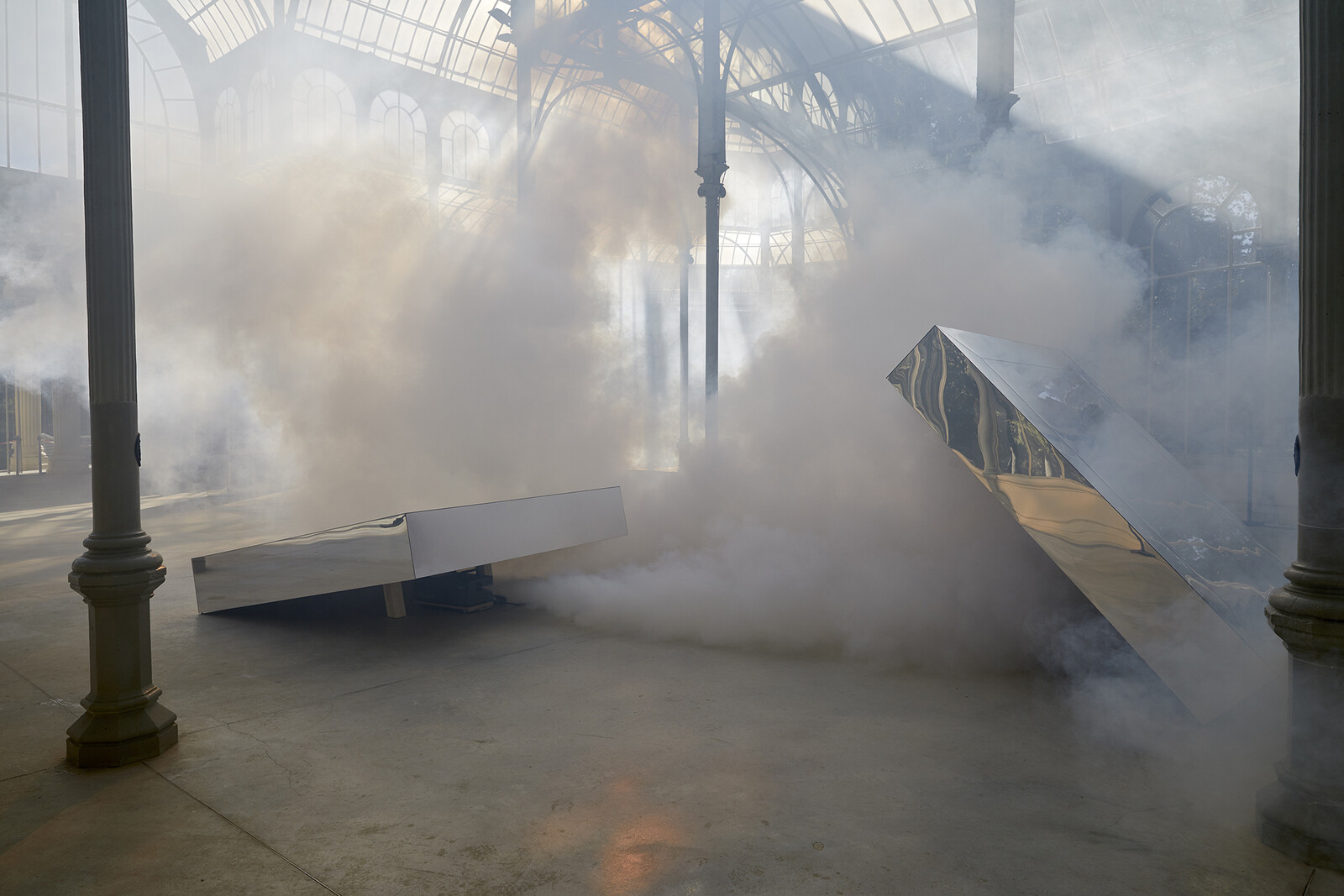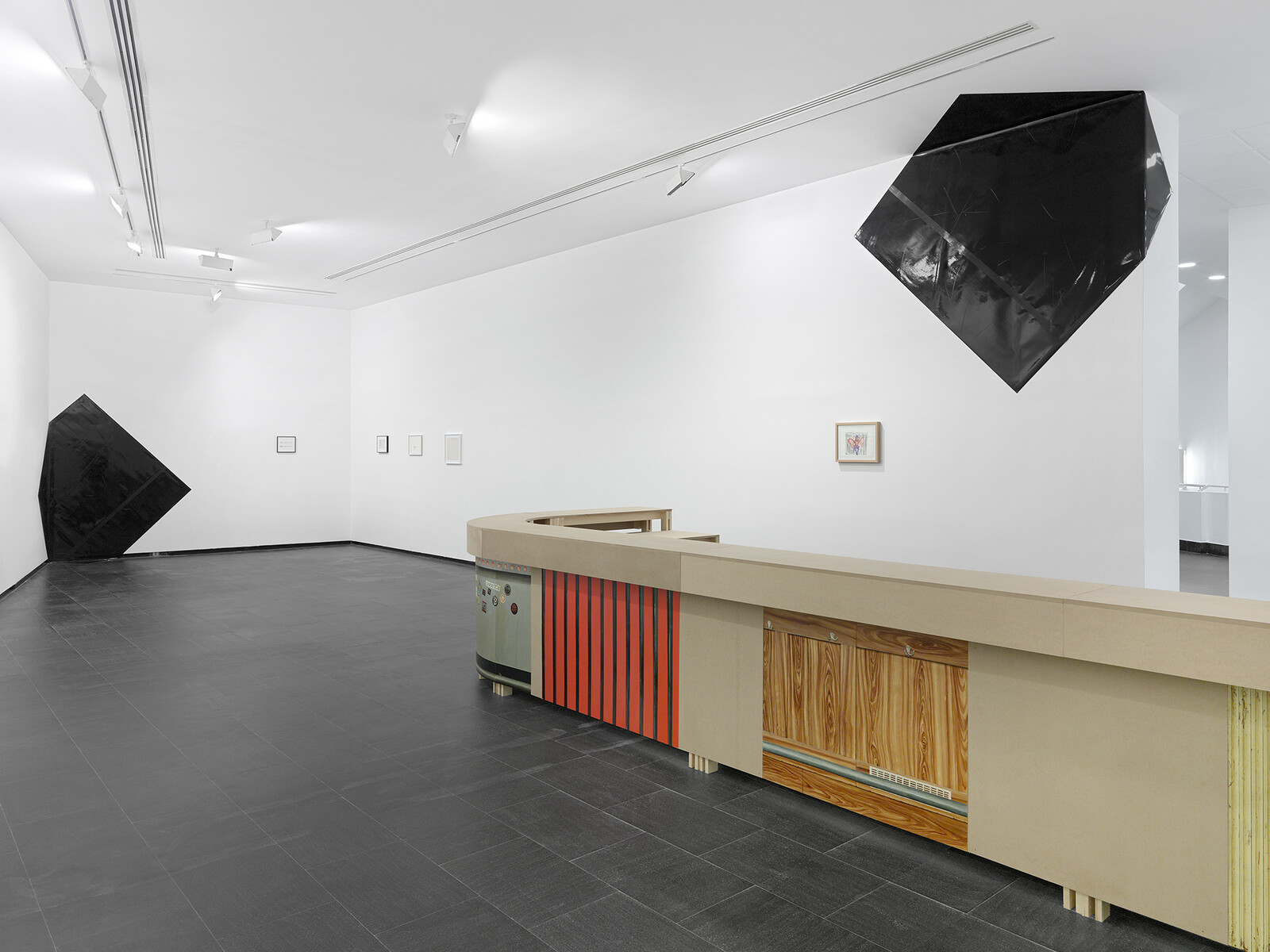Why do you teach?
Before answering your question, I should mention that my teaching environment is fabulous and truly inspiring. I didn’t know much about arts-based research—besides, as I found out, having done it myself for many years—when I started to teach in 2010 in the newly established PhD in Practice program for artists at the Academy of Fine Arts Vienna. Right away I loved working with fellow artists that had already started their careers. And it suited my political and artistic interests that from the beginning the program had a curriculum that explicitly focused on queer and postcolonial politics as well as critical epistemologies (my colleagues at the Academy, especially Tom Holert and Felicitas Thun-Hohenstein, did a great job here).
When Anette Baldauf joined me as a second professor in the program and we managed to secure some outside funding, we started to slowly transform the program so that it could host a more diverse and international group of artists and cultural producers. The participants’ interests, needs, and desires lead to an always transforming body of shared art practices and theories and to particularly close contacts with some visiting scholars and artists (for instance, we have worked with Eve Tuck, Tina Campt, Otobong Nkanga, Park McArthur, Keguro Macharia, and Fred Moten and Stefano Harney, among others). We develop practices around language, which are indebted to creative and poetic ways of speaking and writing. I like that what we do, discuss, and collaborate on feels very connected to my own art practice. While my experience with researching, producing collaboratively, and sharing work in art spaces and museums might be an inspiration for participants, the opposite is also true: what we discuss in the program again and again shakes up my own concepts of making and circulating art. It is also exciting and keeps me moving.
I teach because very beautiful artistic and curatorial projects appear out of this environment against all odds, projects that—speaking of teaching—teach a lot about how to work with and beyond histories of brokenness and the impossibility of repair and reconciliation. It gives me hope to witness this. It keeps me connected to art as a way of orienting oneself in the world and of not giving up on change. The odds of realizing those PhD projects are high, though: working in a postcolonial Europe, within the framework of academia, entails contending with its hierarchies and its time-eating demands to pay attention to schedules, applications, and graduation processes. There is the glass ceiling of doing a PhD at all. And I see the program’s participants arriving to a not-at-all welcoming situation in the European Union, with long and draining processes of attaining a visa and difficult experiences in the everyday concerns of renting a flat or finding a doctor.
How do you relate your teaching to your art practice?
One aspect of my teaching is about providing something that is also key for my own art practice: creating a space that allows for moments of togetherness, pleasure, and beauty to appear (and doing so unnoticed, in the background) while at the same time tending to histories of violence and fear. The most difficult part for me, in teaching as in making art, is also connected to togetherness: developing ways of holding space for friction, conflicts, and awkwardness without crushing too much. Frictions appear more whenever you try to somehow create honest contacts with each other beyond the formalities of academic output (and, in the case of my own work, also beyond the needs of a filmed performance).
What I enjoy the most: In my own work as an artist I rarely have so much time at hand for sitting at a table or taking walks with a diverse group, looking closely at artistic and writing practices, and finding points of connection beyond the different wants, histories and experiences. I love to have the opportunity to see the participants’ projects develop over a time span of four or more years.
Juggling teaching and my art practice can be tricky though. With Pauline Boudry, my partner in our artists’ duo, we more or less manage to align our teaching periods to make room for common studio practice and the installation of new shows. When our art career began to pick up, we started to expand our team and work with more people on organizing, producing, and programming our works, which I enjoy a lot.
What does artistic research look like in practice in the program?
We meet each month for an intense week of readings, writing exercises, and exchanges about artistic practices, politics, and methodologies, doing whatever needs to be done to support the candidate’s projects. We approach artistic research as based on artistic practice in dialogue with (creative) writing, mostly. The week consists of seminars, engaging with guests, informal presentations around the PhD projects, meetings among the candidates, and individual meetings with me and Anette.
After a decade of doing this, we started to understand that the participants’ projects already have performed some kind of shift within the field of arts-based research by fostering projects that tend less toward results and instead focus more on relations, on how an artwork connects or disconnects to an object, introduces collaborators, rearranges its elements and materials, reflects on its technological tools, or invents adequate ways of sharing, which often differ from showing in a white cube or museum. Sometimes withholding instead of showing the findings of one’s research can be the preferred way of creating and safeguarding relations, for instance. We are interested in what it means to “be with,” to be in solidarity and to be adjacent, as well as the limits of such relations. And we are indebted to scholar Eve Tuck’s challenging ideas around the “refusal of research” and her question: Who profits from our research?
As an educator, why would you prefer to go unnoticed, to work in the background?
If I work on a new film with Pauline, and we invite performers, we believe that we take over a specific responsibility: bringing together performers and camera and sound technicians who might like and inspire each other; finding money to pay them; finding a beautiful space; cleaning the backstage; filling the fridge with nice things after asking everybody what they like; bringing a yoga mat for exercise, and organizing enough breaks for everybody to feel relaxed. Additionally, we create a space in a more figurative way as an environment in which we try to ensure that everybody is being recognized (and filmed) in a positive way. I am convinced that you can see this extra labor in the films.
When I speak about things going unnoticed in the PhD program, I do not refer to the modalities of working together, to the program’s structure, to its conflicts, nor to our common content, all of which I would prefer to discuss and decide in the open. But as an educator I believe that I am paid for taking over the responsibility of creating a framework that can support the common work as best as possible. Besides the small things of making everybody comfortable—some of the candidates take part in this in great ways as well—Anette and I try to secure the funding, provide a good-enough space to work in, negotiate the program’s needs in relation to the needs of all the other programs and colleagues within the Academy, and organize the legal procedures around changes to the curriculum.
What is the relationship between the PhD in Practice program and the academy? What role might the institution play in ameliorating or exaggerating the difficult circumstances or teaching and learning while making art?
Like everyone else who works at the Academy, I participate in choosing the students, the professors, and even the rectorate. I work on the curriculum and the development of new programs. As much and as often as I think THE INSTITUTION is strangling me and strangling the program with its scarcity of money and space, I fear that I AM and WE ARE the institution. That is, the institution doesn’t just appear as an entity that faces us and the program; it is here with us and for us to transform. I think we should produce a more diverse institution, and we are already on the way with colleagues having set in motion an amazing committee of equal treatment, for instance. I really think as a program we could make good use of more money and we need more work space. On the other hand, we had and have a lot of freedom to develop the program according to its needs.
Comradery and conflict would seem diametrically opposed, but both contribute to establishing trust and understanding among teachers and students. In your seminars and teaching, how do you create space for difference while maintaining an open and supportive learning environment?
A main challenge for the program and its dedication to the politics of arts-based research is dealing with the individual costs of what I earlier called brokenness, that is, the very deep-reaching effects and affects of being exposed to violent events and surroundings, to precarity, dispossession, and displacement. Most non-EU participants arrive to Europe from situations that are at least partly caused by European colonialism, which doesn’t help to build trust. As teachers, we are caught in the midst of these contradictions: we oppose them and we represent them at the same time. For the candidates, these violent circumstances are often part of their PhD projects, and this might be too much to carry, too much to feel through every time one speaks about it.
There are different capabilities regarding the experience of working with theory, for instance, or the time span one might be able to concentrate, or the working hours someone can put into the program. This seems to be the easiest part: we try to be inventive with accessible formats of learning together, to explicitly mention and explain references, and to read together. The candidates meaningfully support each other in this as well.
The most pervasive conflicts between teachers and participants often have to do with money, or with the fact of promoting a program with a curriculum that embraces queer and de/postcolonial politics while not being able to support its candidates in an adequate way with money, housing, and a safe surrounding. At the moment, we can fill three positions each year that come with employment and two that are without payment. This is the main contradiction in which the program is situated and which I cannot solve.
What work do you return to in your teaching, and what do you hope it imparts to your students?
I try hard not to recommend my favorite artworks and texts to the program’s participants (which is not always easy, I have to admit). Instead, I try to get better at listening to what is needed, and together, often by collecting ideas with the entire group, we usually find works and that are related to the requirements of each individual project. Often, we visit exhibitions in Vienna and discuss them in detail. This doesn’t mean that I would not mention in our conversations what moved me at a specific moment, what I read, or what I enjoyed looking at.
What do you envision for the future of art education and how can it be achieved?
If this question addresses a futurist, utopian reimagining of education, I guess this education will probably not take place in a Western university. But I can see traces of it developing from within and at the outskirts of such institutions. For instance, during an excursion to Athens, we have just visited the impressive Feminist Autonomous Centre for research , an alternative environment for meetings, collective learning, political interventions, knowledge production, and having pleasure, as well as “troublemaking,” as the website states. They reject funding from institutions and finance themselves through small membership fees. As some of their founders explained to us in our meeting, they developed the center as an alternative to the competitive and hierarchical situation and the missing curriculums of radical feminist and queer knowledge production at the available universities.
Despite Dispossession might be another example. This is an “activity book” that came out of a research project by Anette Baldauf, Berhanu Ashagrie Deribew, Sílvia das Fadas, Naomi Rincón Gallardo, İpek Hamzaoğlu, Janine Jembere, and Rojda Tuğrul. It explicates examples for arts-based pedagogies under conditions of dispossession: “post-participatory aesthetics and the pedagogy of land.” Most of the authors were enrolled in the PhD in Practice program as well. The book appeared in all the native languages of its editors and authors and one can download for free the versions in Amharic, Kurdish, Portuguese, Spanish, and Turkish from the publishing house K. Verlag’s website.














